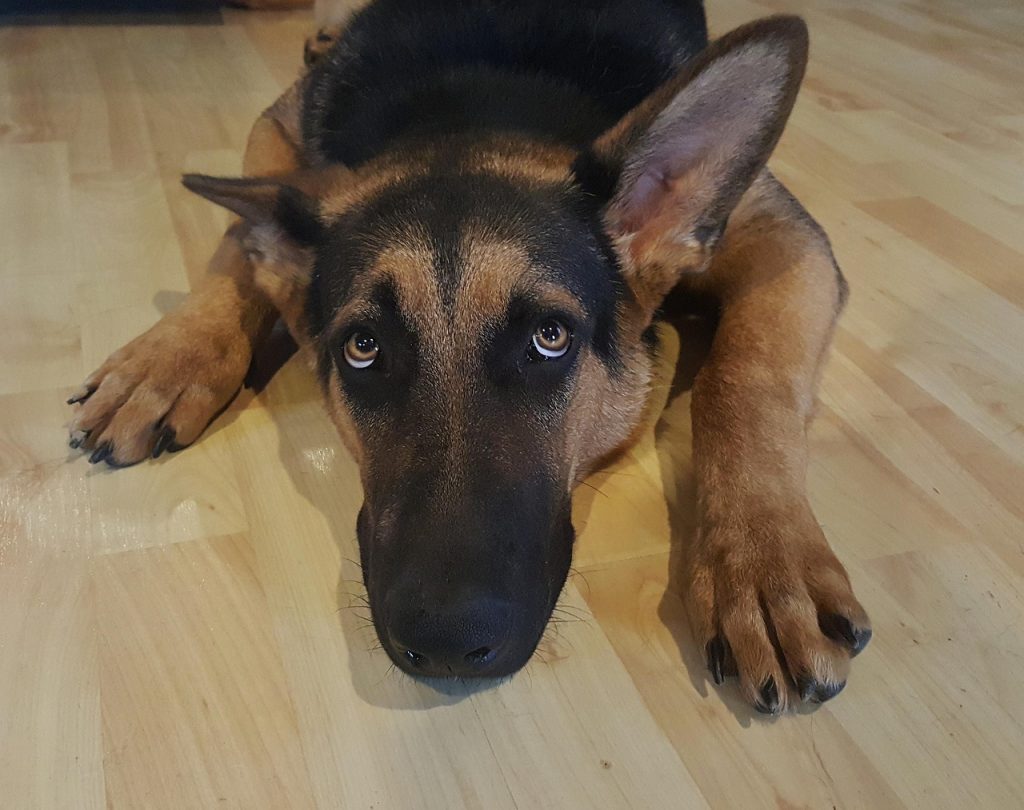
15 Important German Shepherd Loneliness Signs Every Owner Should Know
German Shepherds are celebrated for loyalty, intelligence, and deep emotional bonds with their people. Yet that same devotion makes them prone to loneliness when left without enough mental or social engagement. Experts note that behavior changes linked to isolation often precede anxiety or depression. Recognizing German Shepherd loneliness signs early allows owners to intervene before distress turns chronic.
The following fifteen signs draw from veterinary behavioral research and real-world trainer observations. Each indicator includes a brief explanation and a simple adjustment any apartment owner can implement to restore balance and confidence.
1. Persistent Whining or Howling After You Leave
Shepherds communicate stress vocally. Continuous whining or howling shortly after departure suggests the dog cannot self-soothe. It’s one of the most immediate German Shepherd loneliness signs behaviorists observe in high-bond breeds. Counter-conditioning—short absences paired with quiet rewards—helps reduce anticipation anxiety.
2. Loss of Appetite or Interest in Treats
When loneliness elevates cortisol levels, appetite often drops. Dogs may ignore once-loved foods or eat mechanically without enthusiasm. According to PetMD’s overview of canine depression symptoms, this behavioral withdrawal can mirror mild human depressive responses and should prompt gentle re-engagement rather than force-feeding.
3. Destructive Chewing Focused on Exit Points
Scratched doorframes, chewed blinds, or shredded mats near entryways show where frustration peaks. These aren’t “bad” behaviors—they’re displacement activities releasing tension. Redirect with frozen chews or puzzle feeders placed near safe zones before you leave; over time, these cues become calming rather than frantic.
4. Shadowing or Over-Attachment Indoors
A Shepherd that cannot rest unless touching you is seeking constant reassurance. Trainers classify this as “hyper-attachment.” Practicing short out-of-sight intervals—closing a door for thirty seconds, then calmly returning—teaches your dog that solitude is safe and temporary.
5. Pacing or Restlessness When You Prepare to Leave
Dogs quickly associate departure cues—keys, shoes, coat—with isolation. Rehearsing those cues without leaving breaks the pattern. Grab keys and sit down, or open the door then return to your seat. Within a week, anxiety tied to those triggers begins to fade.
6. Changes in Sleep or Activity Cycles
Some lonely Shepherds sleep excessively; others pace through the night. Track rest patterns for a week. Introducing mild morning exercise—sniff walks or trick sessions—helps reset circadian balance and burn nervous energy before long quiet periods.
7. Increased Barking at External Sounds
Lonely Shepherds may fixate on hallway footsteps or outdoor noises, turning every sound into an alert. This hyper-vigilance fills the social void. Counteract it by closing blinds during absences and providing steady background audio, such as a talk-radio track, to mask unpredictable triggers.
8. Excessive Grooming or Licking
Repetitive licking of paws or flanks can signal self-soothing behavior. When medical causes like allergies are ruled out, evaluate emotional factors. Offering textured chew toys or scent-based enrichment (such as a cloth carrying your scent) can redirect the ritual into healthier comfort habits.
9. Loss of Interest in Play
A playful Shepherd suddenly ignoring toys is signaling emotional fatigue. Rotate a few favorites weekly to renew curiosity and pair short games with praise rather than treats. Ten minutes of structured play can lift mood more reliably than extended free-time when a dog feels disconnected.
10. Digging Indoors or at Apartment Carpets
In confined settings, digging becomes a stress outlet. Provide an approved dig zone such as a low box filled with shredded paper or fleece strips. Redirecting the instinct keeps both flooring and mental health intact.
11. Sudden House-Soiling in Trained Dogs
Regressing to indoor accidents can stem from stress hormones affecting digestion or attention. Avoid punishment; it compounds anxiety. Instead, increase bathroom breaks before departures and calmly reinforce successful outdoor trips.
12. Over-Excitement on Your Return
Intense jumping, spinning, or vocal bursts when you come home indicate relief mixed with stress. Greet calmly, wait for four paws on the ground, then offer affection. Predictable, gentle reunions teach that departures and returns are routine—not emotional rollercoasters.
13. Reduced Responsiveness to Commands
When a normally obedient Shepherd ignores cues, loneliness or depression may have lowered motivation. Keep training sessions short, upbeat, and reward-focused. Positive micro-sessions throughout the day rebuild focus and optimism without overwhelming.
14. Attention-Seeking Nudges or Pawing
Repetitive nudging or pawing at your arm can escalate when dogs crave connection. Balance response: acknowledge briefly, then redirect to a task such as holding a toy or performing “sit.” Fulfilling the need for purpose often quiets demand behaviors faster than endless petting.
15. Withdrawal from Family Members or Other Pets
A Shepherd retreating to another room or ignoring familiar playmates is signaling emotional overload. Reintroduce social contact gently through parallel walks or calm shared resting time. Group reinforcement restores security without forcing interaction.
Helping a Lonely German Shepherd Recover
Addressing German Shepherd loneliness signs requires routine, enrichment, and empathy—not guilt. Schedule consistent play, offer mental puzzles, and ensure daily communication through voice or gentle touch. If symptoms persist or intensify, consult your veterinarian or a certified behaviorist for targeted intervention. For apartment owners balancing work and companionship, our separation-anxiety coping guide outlines small environmental tweaks that make a large emotional difference.
Author’s Insight
Shane Ryan is the founder of Busy Pet Parent and a pet-care researcher specializing in apartment-based canine behavior. His work focuses on practical enrichment and emotional health strategies for urban dogs. This article is designed for educational reference and can be cited in journalist features or expert round-ups.
